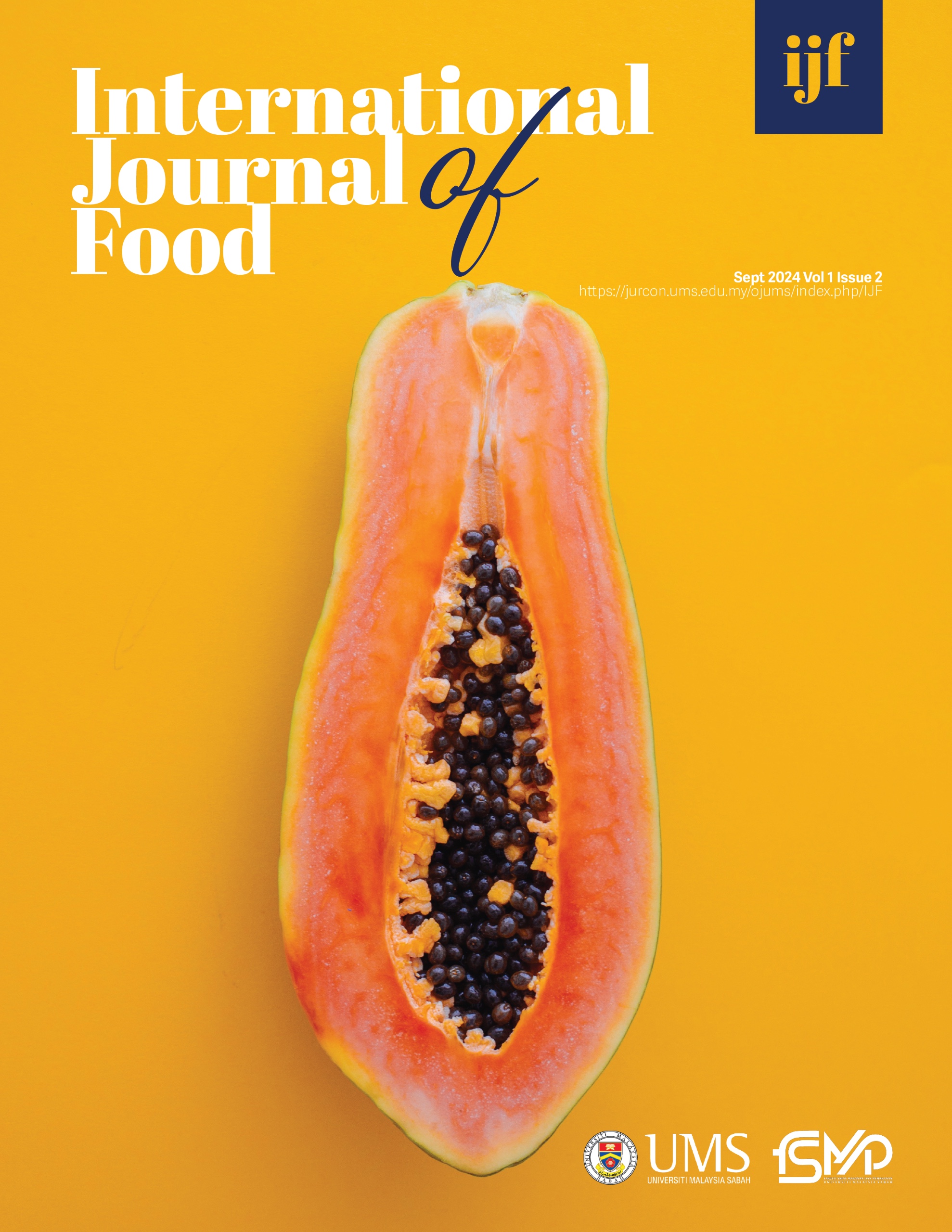Phytochemical screening and antioxidant activity of Tuhau (Etlingera coccinea) rhizome and leaf
DOI:
https://doi.org/10.51200/ijf.v1i2.5012Keywords:
antioxidants; Etlingera coccinea; tuhau; phytochemicals; wild gingerAbstract
The indigenous people of Borneo have historically utilized the wild ginger Etlingera coccinea, locally known as Tuhau, for its medicinal properties. However, most of its medicinal properties are yet to be investigated. Therefore, this study aims to assess the phytochemical profile and antioxidant capacity of Tuhau leaf and rhizome. Phytochemical screening was conducted to assess the presence of flavonoids, glycosides, saponins, proteins and amino acids, tannins, and steroids. Additionally, total phenolic and flavonoid contents were determined. The antioxidant potential of the extracts was evaluated through 2,2-diphenyl-1-picrylhydrazyl (DPPH), 2,2'-azino-bis(3 ethylbenzothiazoline-6-sulfonic acid) (ABTS), and ferric reducing antioxidant power (FRAP) assays. Results revealed the presence of flavonoids, glycosides, saponins, proteins and amino acids, tannins, and steroids in the leaf extract. Furthermore, the leaf extract exhibited higher total phenolic (61.57 ± 0.29 mg GAE/g dry extract) and flavonoid contents (30.32 ± 0.42 mg CE/g dry extract) compared to the rhizome extract (33.57 ± 0.29 mg GAE/g dry extract and 9.38 ± 0.02 mg CE/g dry extract, respectively). Moreover, the leaf extract demonstrated significantly superior antioxidant activity (71.48 ± 0.53 %, 28.48 ± 0.14 %, and 2.31 ± 0.03 mM Fe2+/g dry extract) compared to the rhizome extract in DPPH, ABTS, and FRAP assays, respectively. Consequently, Tuhau leaf exhibited promising potential to be utilized in the food industry.










